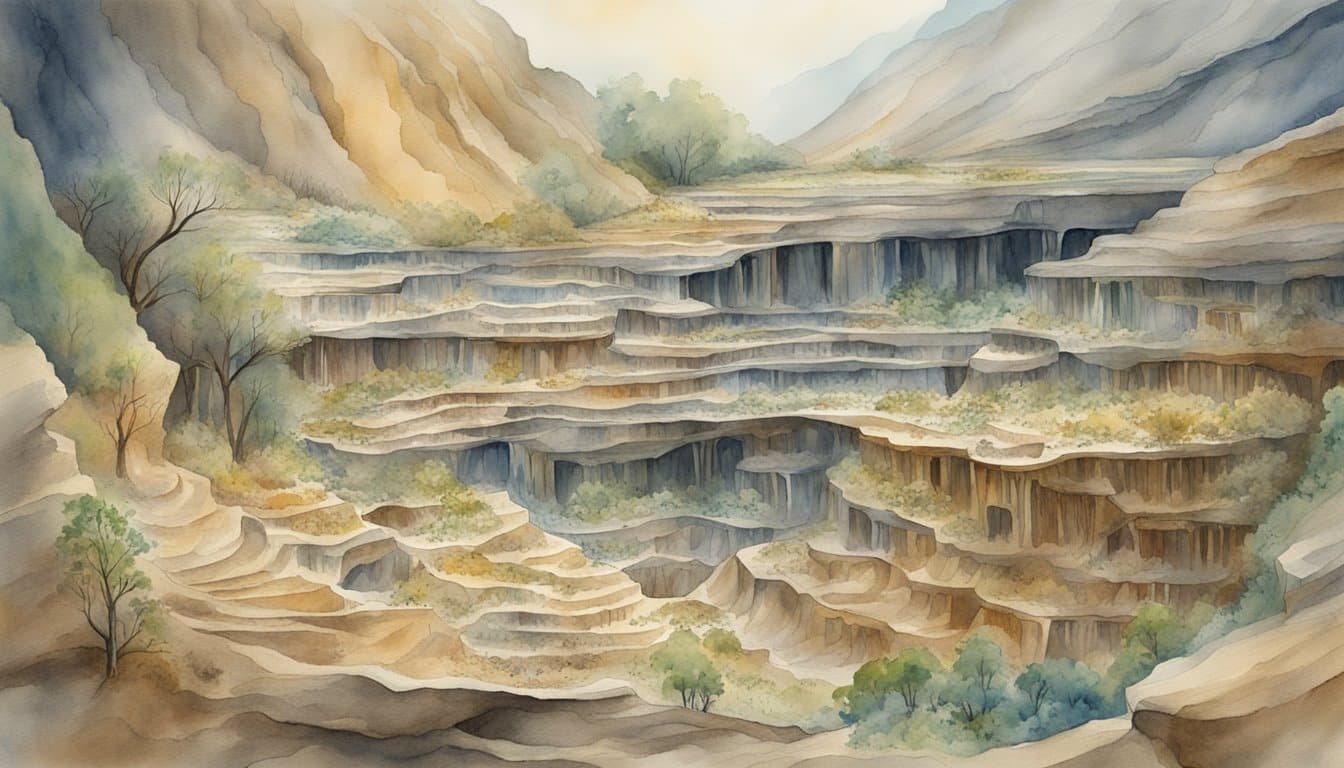Origins of Life Theories
The exploration of the origins of life on Earth combines geological records and laboratory experiments to pinpoint the transition from non-living to living matter. Two major hypotheses dominate the discussion: the idea that life began in a “primordial soup” of organic compounds, and the “RNA World” hypothesis suggesting that RNA was a pivotal molecule for the start of life.
Experimental Evidence
The famous Miller-Urey experiment conducted by Stanley Miller and Harold Urey in 1952 stands as a benchmark for experimental evidence in origin of life studies. They replicated Earth’s early conditions in a laboratory setting, producing amino acids from simple inorganic compounds through chemical reactions. This experiment was groundbreaking, implying that Earth had the necessary building blocks for life to emerge spontaneously. Over time, further experiments have expanded on these initial findings, highlighting the role of various environmental conditions in the synthesis of organic molecules.
Chemical Evolution
Chemical evolution refers to the gradual formation of complex organic compounds from simpler ones before the existence of life. A key concept within this framework is abiogenesis—the process of life arising naturally from non-living matter. Under this assumption, it is thought that simple organic compounds underwent a series of reactions leading to more complex molecules such as RNA, which not only carries genetic information like DNA but can also catalyze chemical reactions as enzymes do. This dual function supports the RNA World hypothesis, that proposes that self-replicating RNA molecules were precursors to all current life forms. However, whether life originated on Earth or was seeded from extraterrestrial sources such as meteorites that carried organic compounds remains a topic of debate and investigation.
Fossil Records and Geological Evidence

Fossil records serve as time capsules, offering glimpses into life’s earliest chapters on Earth. Geological layers, embedded within them, tell a tale spanning billions of years. This evidence, pieced together through meticulous studies, uncovers the origins and evolutions of ancient life forms.
Precambrian Life
The journey to uncover the dawn of life starts with the Archean Eon, about 3.5 billion years ago, when the earliest known life forms, stromatolites, thrived. These layered rock-like structures were built by communities of microbes, which still can be found in some parts of the world like Australia, capturing the sun’s energy. In the seemingly inhospitable environment of early Earth, microfossils have been detected in ancient rocks, some up to 3.7 billion years old, revealing the presence of bacteria. At the tail end of this eon, zircons—tiny timekeepers of geology—found in Australia provided radiometric dating evidence of Earth’s watery surfaces, hinting at potential habitats for life.
It was during the Proterozoic Eon that life began to diversify. The ediacaran biota, appearing over 600 million years ago, showcased varieties of simple multicellular organisms, leading up to examples of early complex life. Stromatolites here also flourished, creating more build-ups in marine environments as captured in ancient limestone deposits of places like Shark Bay, Australia and South Africa.
Cambrian and Beyond
The Cambrian Explosion, a pivotal event approximately 541 million years ago, blossomed with a sudden surge in biodiversity. This era brought the rise of many modern animal groups like sponges and trilobites. Fossils from this time, such as those found in the Burgess Shale, depict the transition towards greater multicellularity and complexity.
As the eons marched on, life on Earth continued to evolve. From the cambrian period’s diverse sea life to the first breaths taken by land animals, every fossil represents a chapter in Earth’s story. Ediacarans gave way to dominant marine invertebrates, the trilobites waded through the ancient oceans, and sponges filtered the primordial waters. With each new discovery, from Australia’s jigsaw-puzzle-like Ediacaran biota remnants to South Africa’s revealing microfossils, scientists can piece together a story of resilience and transformation—a narrative penned by Earth itself, one fossil at a time.
Atmospheric and Environmental Impact on Life

The history of life on Earth is inextricably linked to the atmospheric and environmental conditions. In particular, shifts in oxygen levels have had a profound effect on life, propelling evolution forward and triggering massive changes across the planet.
Rise of Oxygen
The appearance of cyanobacteria and their ability to perform photosynthesis roughly 2.4 billion years ago radically altered Earth’s atmosphere. These early microbes started converting carbon dioxide and water into glucose and, crucially, oxygen. This event set the stage for the Great Oxidation Event, when oxygen began to accumulate in the atmosphere. The rise in oxygen led to significant shifts in Earth’s chemistry and paved the way for more complex life forms.
- Before oxygen’s rise, Earth’s atmosphere was rich in methane and ammonia.
- As oxygen levels increased, many anaerobic organisms (which don’t require oxygen) likely faced mass extinction due to their inability to adapt to the changing environment.
- The presence of oxygen also led to the formation of the ozone layer, which shielded the surface from harmful UV radiation, allowing life to flourish.
- This shift transformed the oceans and land, with evidence of iron oxidation seen in ancient rock formations.
Evolution of Eukaryotes
With an oxygenated atmosphere, the stage was set for the leap from simple prokaryotic life forms, like bacteria, to more complex eukaryotes, which boast internal organelles and the capacity to become multicellular organisms. Central to this transition were the mitochondria, which some evidence suggests originated from bacteria that took up residence inside a host cell. This endosymbiotic relationship was beneficial for both parties and allowed for a more efficient use of oxygen through the process of aerobic respiration.
- Eukaryotic cells emerged roughly 1.6 billion years ago, boasting internal structures such as mitochondria and chloroplasts.
- The rise of eukaryotes provided a foundation for further complexity, including the development of multicellular organisms and the diversification of life forms on Earth.
- The ability to harness energy more efficiently through mitochondria made eukaryotes incredibly adaptable, leading to their domination in many environments.
- As eukaryotes diversified, new pathways for evolution unlocked, setting the trajectory for all future life on Earth.

